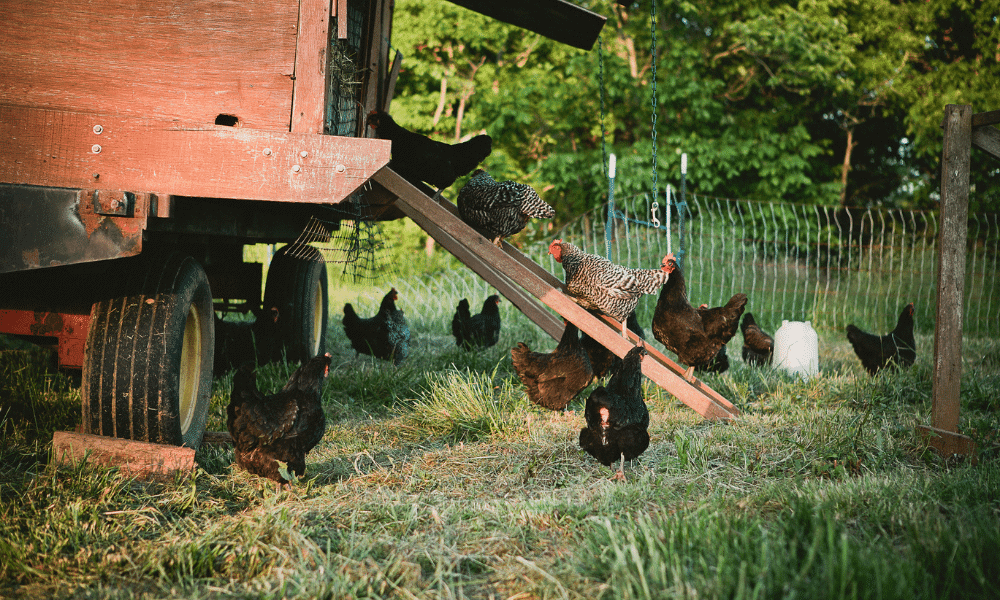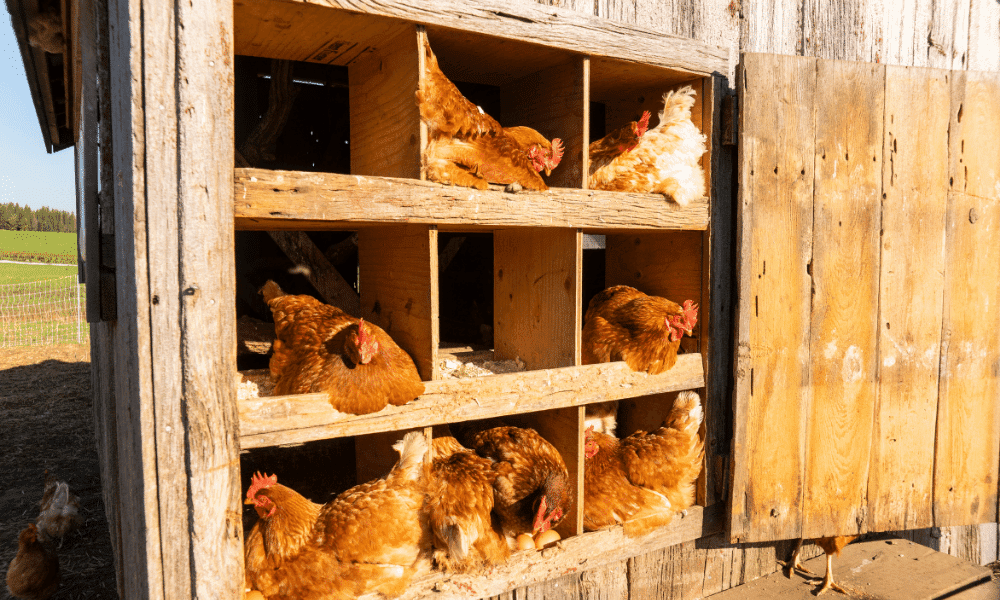I like to think of my chicken coop as a warm and cozy home for my chickens and the nesting box a sheltered, safe, and comfortable bed for them.
I guess in essence this is exactly what they are. So, I’m not crazy after all, am I? *laughs with his 60+ chickens*.
But in all seriousness, when you start treating your chicken coop as their home, you naturally want it to be as accessible and homely as possible.
Although there aren’t any requirements for having ramp access to a chicken coop or nesting box, it turns out there’s a good reason to keep them elevated from the ground.
Here’s whether chickens need ramps to access their coop or nesting boxes, and why you should elevate the chicken coop and keep the nesting boxes off the ground (where possible!).
Contents
Do Chickens Need Ramps?
Chickens are surprisingly nimble for such little creatures. You wouldn’t know it simply by looking at them, but a chicken’s knees and ankles allow them to spring rather high in the air when they need to.
Still, when you’ve got yourself an elevated coop or nesting boxes off the ground then it’s common courtesy to offer your chicken a ramp they can use to walk up easily.
There’s a common debate on whether ramps are really necessary. Within reason, your chickens are certainly capable of stepping up, jumping, or hopping into nesting boxes or the entrance to their coop.
But, it’s best to offer your chickens a ramp as an easier option for them, and depending on the height of elevation it’s sometimes absolutely necessary.
Here’s everything you need to know!
Why You Should Elevate The Chicken Coop

The first question you might ask is why on earth are chicken coops normally elevated off the ground?
Well, there are actually countless benefits to chicken coops being off the ground and very few downsides.
An elevated chicken coop will:
- Prevent excess moisture absorption from the ground, keeping things fresher and cleaner.
- Have sufficient protection from any burrowing predators
- Naturally discourage rodents and other unwanted guests like snakes.
- Help keep a clear entrance, free of snow, mud, and rain build-up.
- Adds extra space to your chicken run (underneath the coop).
- Provide shade underneath the coop too!
- Makes egg collection more seamless – no bending down!
And I’m sure you can come up with a few more reasons, but these are the obvious, leading reasons why you should elevate your chicken coop if you’ve got the option.
Still, not all chicken coops are off the ground, and it all depends on your preferences, your environment, and your potential predators or dangers in the area.
Do Chickens Need A Ramp To Their Coop
So if you’ve elevated your chicken coop, even by as much as a few inches, it’s worth offering your chickens a ramp for ease of access.
Although they are completely capable of jumping about 2 feet, they will find it much more comfortable having access via a ramp.
To help, try to add some kind of texture, bars, or steps to the ramp to help your chickens find a grip on it too!
If your coop is not elevated then you certainly don’t need a ramp. If it’s only a few inches then the choice is up to you, but any higher it’s always better to offer a ramp for your chooks!
Do Chickens Need A Ramp To Their Nesting Box

Just like elevating the chicken coop, choosing to place your nesting boxes off the ground inside your coop has a host of benefits. Chickens feel secure when they are high up and off the ground, which is why chickens will choose to sleep on a roost, even in the wild.
Placing your nesting boxes off the ground in your chicken coop will provide safety and comfort to your chickens, and will help keep predators and pests from getting anywhere close to their eggs!
But if you’ve got a large flock of 20+ chickens where you’ll need at least 5-6 nesting boxes to have enough nesting boxes per chicken, are you really going to install a ramp for each of them?
It’s just not practical, and frankly, it’s simply not necessary.
You could still have one ramp installed to give them the option, particularly if you have young, old, or smaller bantam chickens. But, so long as you put your nesting boxes at a reasonable height you won’t actually need a ramp.
What Height Should Nesting Boxes Be?
The recommended height to place your nesting boxes is between 18-and 24 inches above the ground.
Most chickens will comfortably be able to jump or fly up to 24 inches from the ground, but normally a height of 18 inches is around about perfect.
Any higher than 24 inches and you may find a few of your chickens have trouble reaching it easily. If this happens then your hens are more likely to make nests of their own and hide their eggs!
Another recommendation is to place your nesting boxes at a lower height than your roosting bars and preferably in a different location too. This will help prevent your chickens from sleeping in the nesting box when they aren’t laying!
Final Thoughts
So, there are countless benefits to elevating your chicken coop off the ground, as well as placing your chicken’s nesting boxes above ground level in the coop too.
Ramps should always be offered to your chickens at the entrance of the chicken coop. Even though they are capable of jumping in, it just gives them easier access.
When it comes to placing ramps to nesting boxes, it is optional, but having one out will never hurt. This will just help any lazy, old, or young hens get into their nesting boxes that much easier!
Placing your nesting boxes at about 18 inches tends to be the sweet spot, but there’s nothing stopping you from placing another layer of boxes that one, so long as your chickens have an access point like a ramp!
